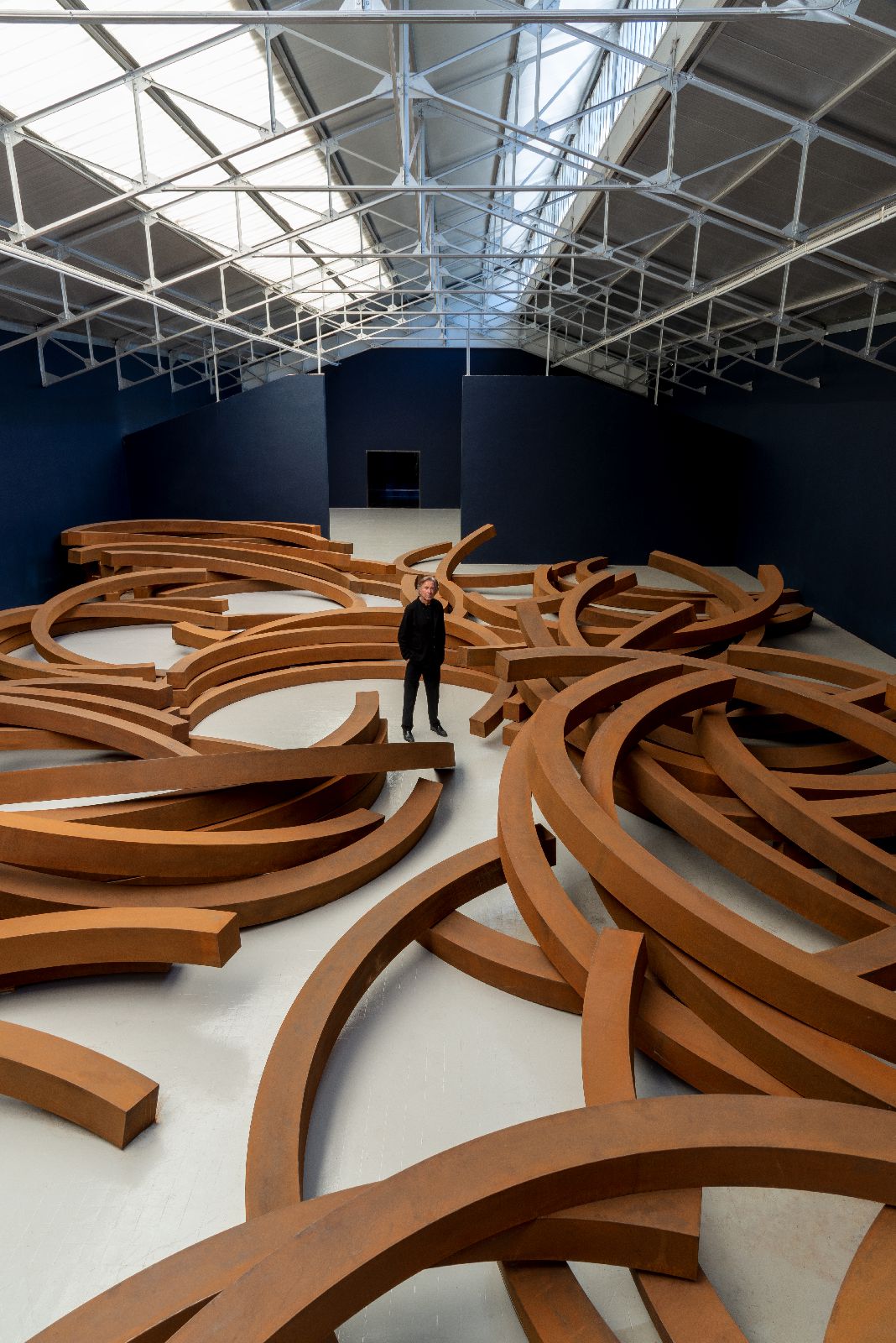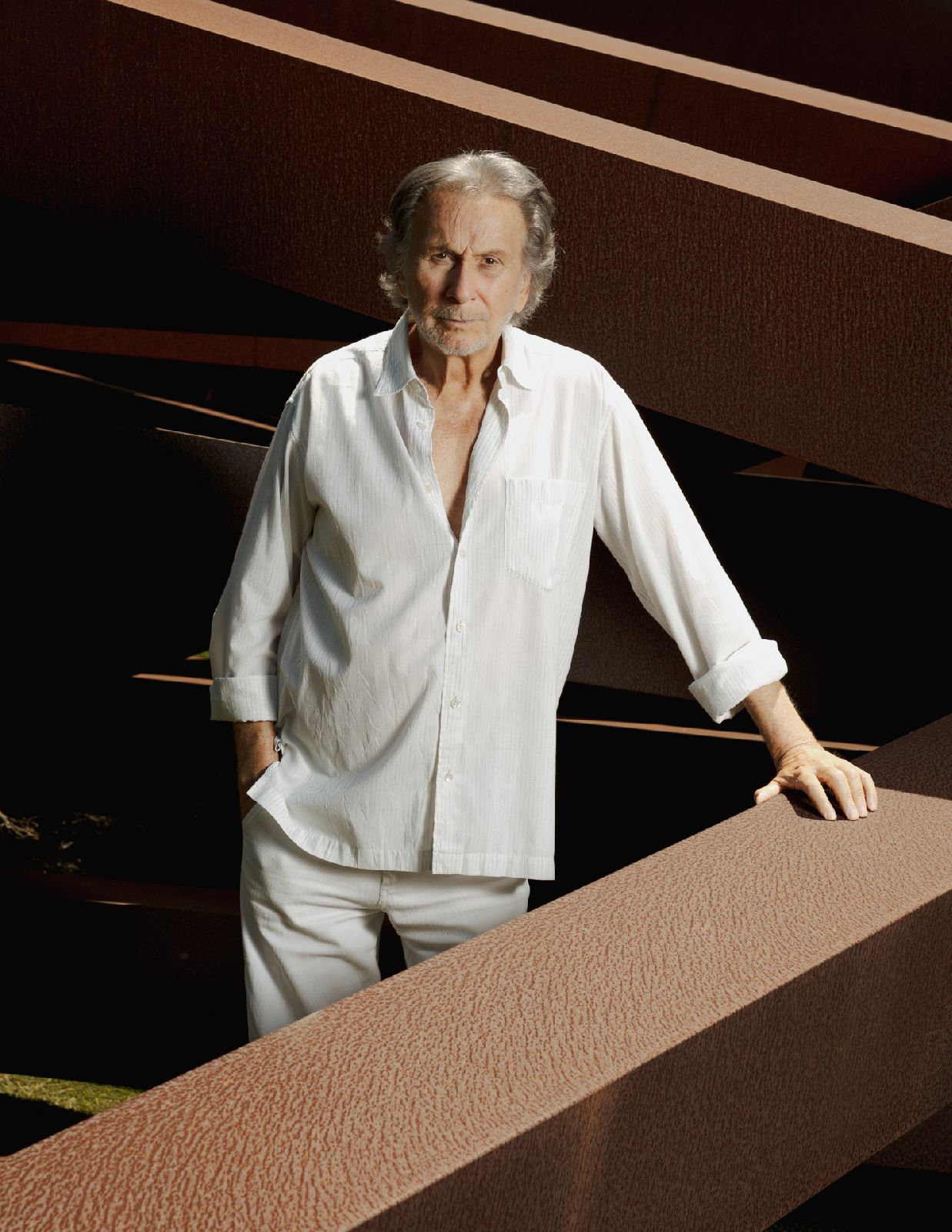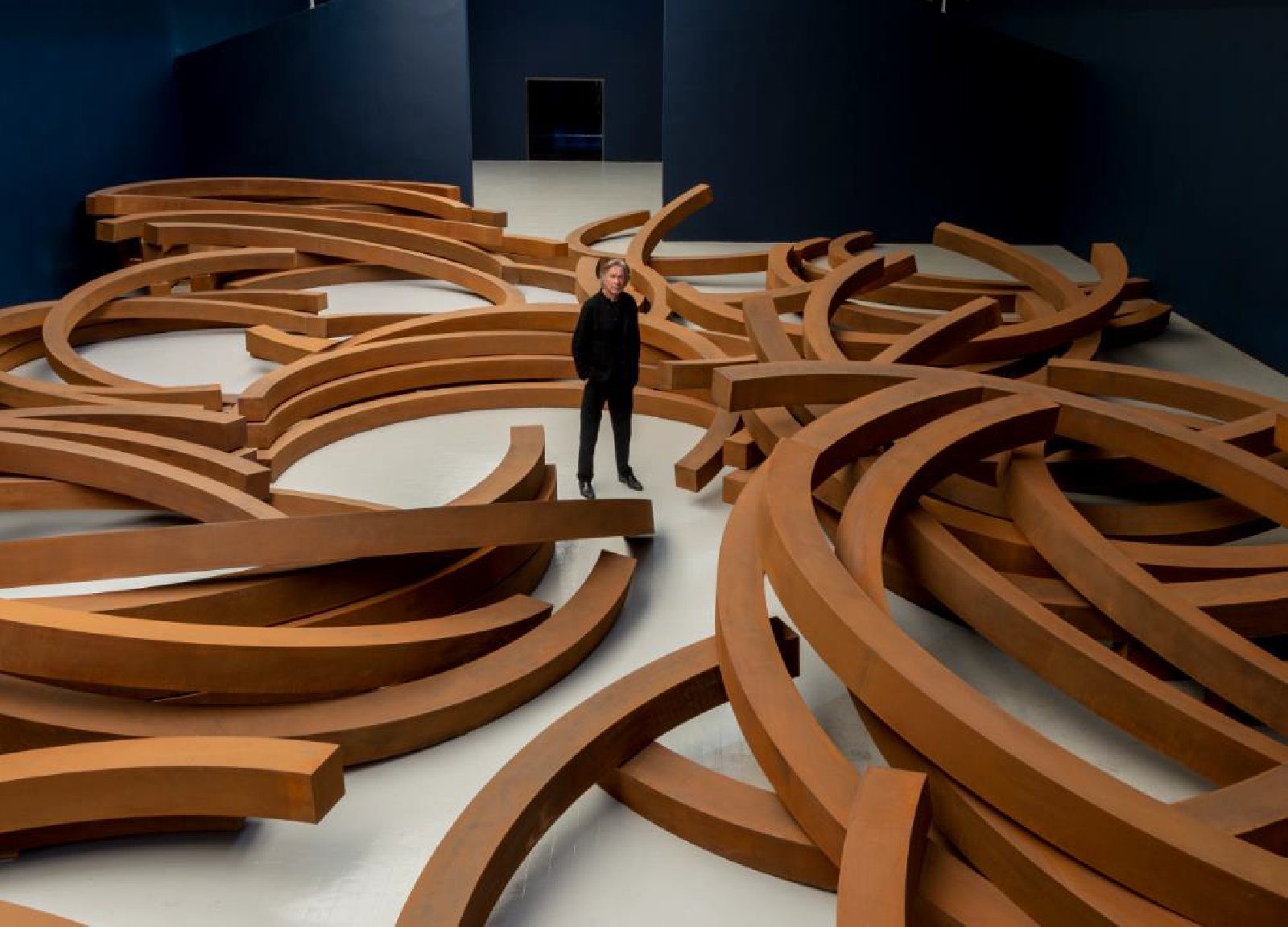The Hypothesis of Gravity is a monographic exhibition devoted to the contemporary artist Bernar Venet. This monumental work fills the 1,000 square metres of the luminous Glass Pavilion, reconfiguring the museum’s internal and external landscape. Inside the Glass Pavilion are around one hundred corten steel beams in the form of Arches, Straight Lines, and Angles. Piled on top of each other in a jumbled accumulation on the floor, these sculptural and linear elements, simultaneously monumental and graphic, have collapsed in on each other.
In this work, Bernar Venet is putting forward the hypothesis of gravity as a formal proposition. Matter here is no longer governed by the forces of nature: the industrial motifs are arranged in a disordered way that recalls the spontaneous organisation of plants. The sculpture releases energy and a fierce beauty, offering visitors a physical and artistic experience of space that is poetic and unpredictable.
The work is a continuation of the artist’s exploration of matter, its capacity to resist and its reaction to gravity, and of the question of entropy, which is central to his work. The practice of piling and collapsing, and the use of random combinations as a form of creation, are essential to Bernar Venet’s work. At the Louvre-Lens, The Hypothesis of Gravity marks a new stage in the artist’s work: here the installation is connected spatially, visually and conceptually to the Gallery of Time, a 3,000-square-metre-space where 5,000 years of art history are visible at a glance, with no partitions.
A history of sculpture emerges, disrupted by this majestic and random arrangement created by Bernar Venet. It questions the sculptor’s very act, which aims to generate a new space through the combination of masses and voids, by adding matter or removing it, be it through modelling, accumulation or carving. Source by Louvre-Lens.
- Location: Glass Pavilion, Louvre-Lens, France
- Artist: Bernar Venet
- Period: 11 July 2021 to 10 January 2022
- Photographs: Jerome Cavaliere, Courtesy of Louvre-Lens





